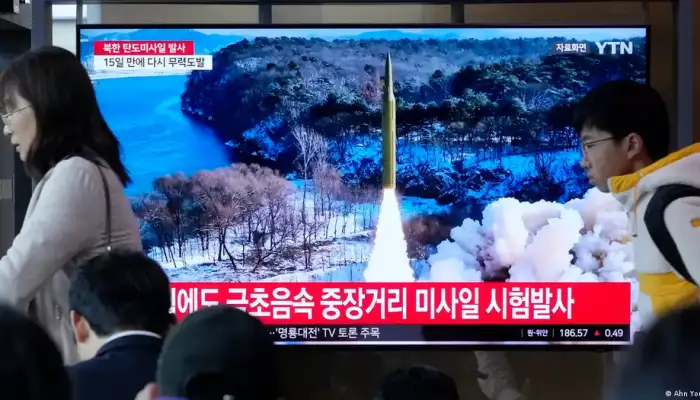
North Korea tested a new hypersonic intermediate-range missile fueled by solid propellants, state media KCNA reported on Wednesday.
It comes a day after Japan and South Korea detected the missile launch from an inland area around the capital Pyongyang that appeared to fall outside of Japan's exclusive economic zone.
The missile traveled some 600 kilometres (372 miles) before it fell into waters near Japan, according to South Korea's military.
However, KCNA said it traveled 1,000 kilometers and that North Korea conducted the test fire to focus on "verifying the characteristics of gliding-skip flight orbit and cross-range maneuvering capability of the hypersonic glide vehicle" while limiting the range "in consideration of safety."
Hailing the "important military strategic value" of the new missile, state media said the missile launch was overseen by North Korean leader Kim Jong Un.
Talking about the successful launch of the missile named Hwasong-16B, Kim said the North had developed "another powerful strategic offensive weapon" and achieved its goal of getting missiles "with various ranges on solid-fueled, warhead-controlled and nuclear warhead-carrying basis."
Kim described the missile as an important addition to his nuclear war deterrent which he intends to build up to ward off his "enemies," a reference to the United States, South Korea and Japan.
In recent years, North Korea has expedited the development of its nuclear technology. Its more frequent missile tests in the past few years have also risen tensions in the region and prompted an increased security cooperation by the US, Japan and South Korea.